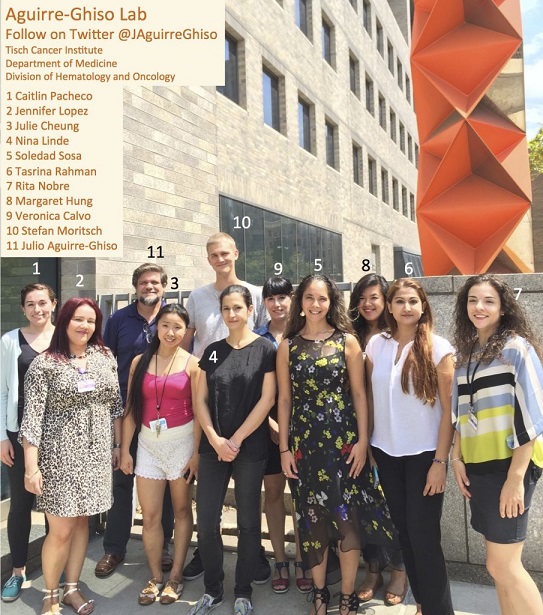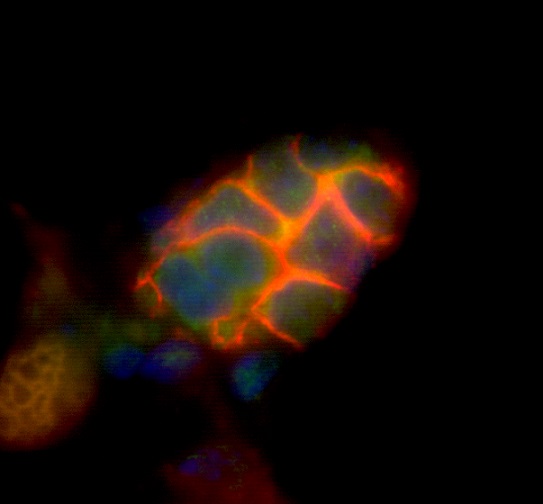Breast Cancer
Microenvironments and Signaling Pathways Regulating Early Dissemination, Dormancy, and Metastasis



Posted June 20, 2017
Julio A. Aguirre-Ghiso, Ph.D., Mount Sinai School of Medicine, New York, NY
Metastasis, the leading cause of breast cancer-related deaths, can arise from lesions that develop from disseminated cancer cells (DCCs), which establish residence in distal organs during the very early stages of disease. Current research shows that metastases can develop in the absence of an obvious primary tumor mass, yet the mechanisms controlling this process are unclear. With support from a Fiscal Year 2013 (FY13) Breast Cancer Research Program Breakthrough Award - Funding Level 1, Dr. Aguirre-Ghiso and his team at Mount Sinai School of Medicine uncovered a mechanism of early dissemination and metastasis in HER2+ breast cancer (Nature, 2016).

Co-Principal Investigator

Dr. Aguirre-Ghiso initially investigated in mouse models of breast cancer whether the loss of tumor-suppressive p38 signaling concomitant with oncogenic HER2 upregulation (which would allow detached cells to survive) might encourage a disseminating phenotype in early DCCs. Early DCCs were defined as those originating in mice that displayed normal ductal architecture, hyperplasia, and mammary intraepithelial neoplasia, but no detectable tumors. Ultimately, they found that, while p38+ cells typically retain E-cadherin expression and membrane-localized ß-catenin (non-invasive phenotype), HER2+ cells display a loss of E-cadherin and ß-catenin junctions, as well as low levels of phosphorylated ATF2-all indicators of an invasive cell phenotype that tends to persist in large primary tumors. Furthermore, the team discovered that HER2+ cells from early primary lesions rely on Wnt canonical and non-canonical signaling to induce a phenotype associated with the upregulation of the pro-metastatic transcription factor, TWIST1. Notably, HER2+ DCCs that are detected during the stages of primary tumor growth display a downregulation of the TWIST1 gene, while most HER2+ early DCCs are quiescent and upregulate TWIST1, indicating a dormant phenotype preceding metastatic capacity for the early DCCs. The early DCCs were also found to display a greater ability to intravasate and lodge in secondary organs. These studies warrant further investigation into whether changes in TWIST1 and E-cadherin expression control the reactivation of a cancer in a secondary site, such as the lungs.
The finding that a subpopulation of early cancer cells can disseminate and metastasize changes the current paradigm of oncogene-driven dissemination prior to proliferation. The results from this study may also help to explain the existence of metastatic lesions of unknown primary origin in patients with non-recurrent ductal carcinoma in situ. Ultimately this new knowledge may better inform on ways to target DCCs in all forms to prevent metastasis and save the lives of breast cancer patients.

HER2+ and Twist+ early disseminated cancer cell precursors in the mammary tissue
Publication:
Harper KL, Sosa MS, Entenberg D, et al. 2016. Mechanism of early dissemination and metastasis in HER2+ mammary cancer. Nature, 540:588-592.
Link:
Abstracts for Dr. Aguirre-GhisoPublic and Technical Abstracts: Microenvironments and Signaling Pathways Regulating Early Dissemination, Dormancy, and Metastasis
Last updated Wednesday, March 19, 2025














